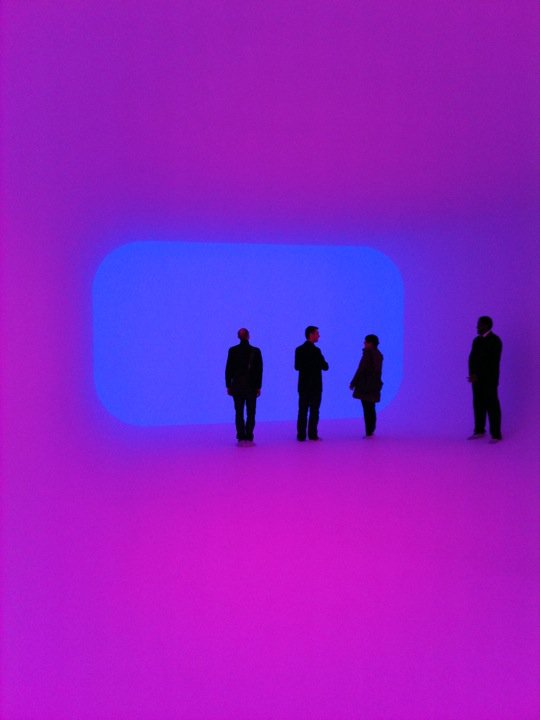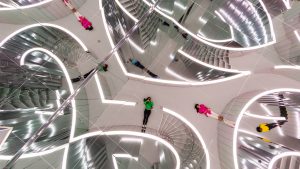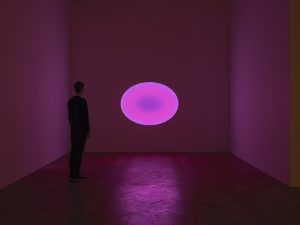Through light, space can be formed without physical material like concrete or steel. We can actually stop the penetration of vision with where light is and where it isn’t. Like the atmosphere, we can’t see through it to the stars that are there during the day. But as soon as that light is dimmed around the self, then this penetration of vision goes out. So I’m very interested in this feeling, using the eyes to penetrate the space.
–James Turrell
I remember making my first breakthrough with painting as a child; the first time something I painstakingly transferred on to a page looked similar to the object it was supposed to represent, and it was all about the idea of daubing colour just where the light hit. No pencil outlines first, no colouring-in, just lighter shades where the light hit and darkness or blanks where it didn’t. Later in life I was reminded of this while studying semantics, considering the broader philosophy of the objective signifier – how do we ever know that what we see as ‘tree’ or ‘blue’ is the same as the meaning ascribed to those words by our neighbour?
James Turrell plays with all of these notions, and adds another dimension, blurring the boundaries of art and science (he studied Experimental Psychology in 1965 before completing a Masters in Fine Art in Claremont Graduate School, University of California) by using light in his works as a medium of perception. The theory is, by manipulating the limitations of the cognitive processes by which the brain interprets what the eyes see (as illuminated by light), it is possible to dissolve one’s surroundings so light itself can become something tangible.
Turrell’s methodology uses sensory depravation and the chromatic spectrum, and there are two larger works on show to demonstrate: one is Bindu Shards, part of the Perceptual Cells series which is experienced by one person at a time. It appears in part like an MRI scan – the visitor lies on a tray and is inserted into the spherical cell (rather daunting in itself) where they are subjected to a series of sounds and coloured light without being able to really make out surroundings or edges and borders. The light then becomes all that remains to focus on, and it begins to play just behind or inside the vision, opening the iris. Very hard to comprehend without experiencing, and sadly the slots are fully booked for these 20 minute immersions. However, the alternative is the other work Dhatu.
Entrance to Dhatu (part of the Ganzfeld, or ‘entire field’ series) feels like entering Mike Teevee’s television set in the 1971 version of Willy Wonka and the Chocolate Factory, guarded by suited escorts who ask you to remove footwear and place white plastic bags over your feet. Already the boundaries between an art work and a science laboratory are called into question as you step into what looks like a two dimensional colour picture, but opens out into what I believe is a cylindrical chamber (which I couldn’t say with any real conviction, as the whole point is too remove the essence of the environment in which the light is emitted). The light is pink, and dense; it hangs in such a way that you’d expect not to be able to see each other, but strangely faces are very clear, almost suspended in colour. As we move through the spectrum into red then yellow a thudding begins to occur behind the eyelids and a blackness emerges from each blink into my peripheral vision. At our most vulnerable we travel through blues and purples, and a strange calm descends. It may be a measure of my total susceptibility but other faces in the chamber appear clearer and more beautiful.
Ever since Duchamp’s readymades it is often heard said that the boundaries of art have been blurred, and this has lead to the much-asked question ‘but is it art?’ James Turrell demonstrates how technology, philosophy and psychology can be used to create beauty and inspire contemplation. I think if something presents beauty and asks us to question the materials and environment around us, then not only is it Art, but it is the contemporary sublime.
James Turrell, Gagosian Britannia Street, until 10 December.










